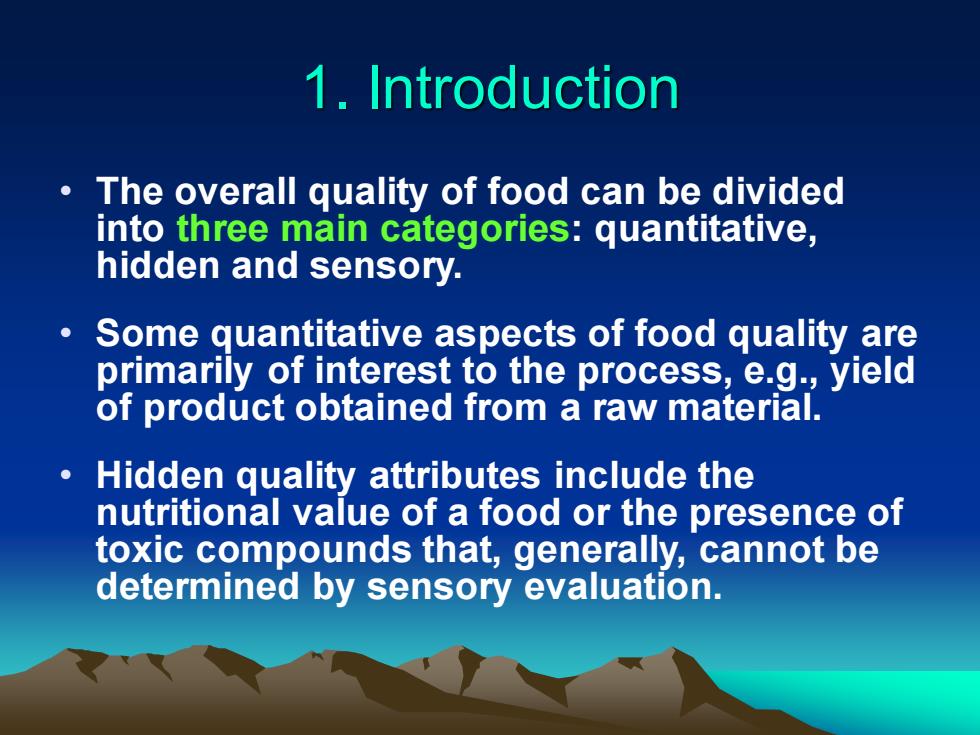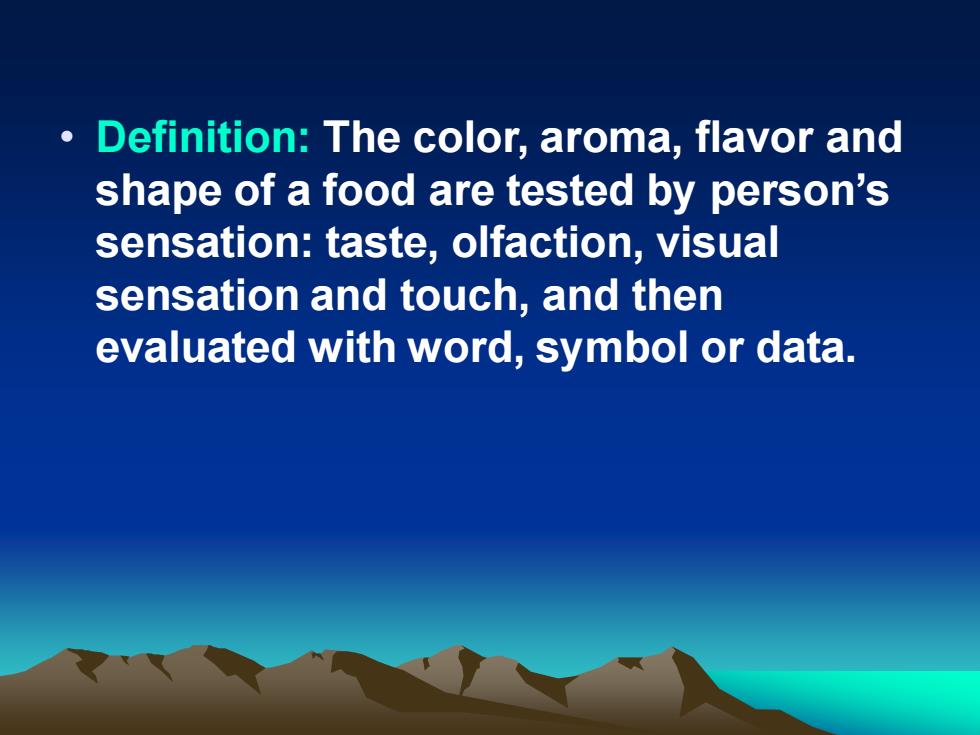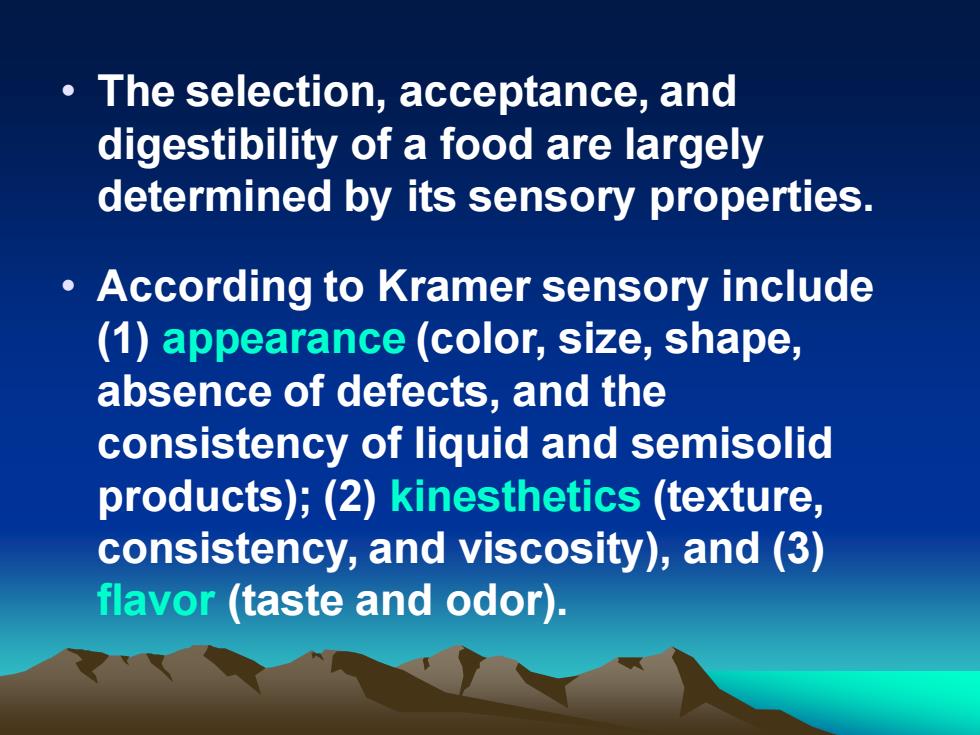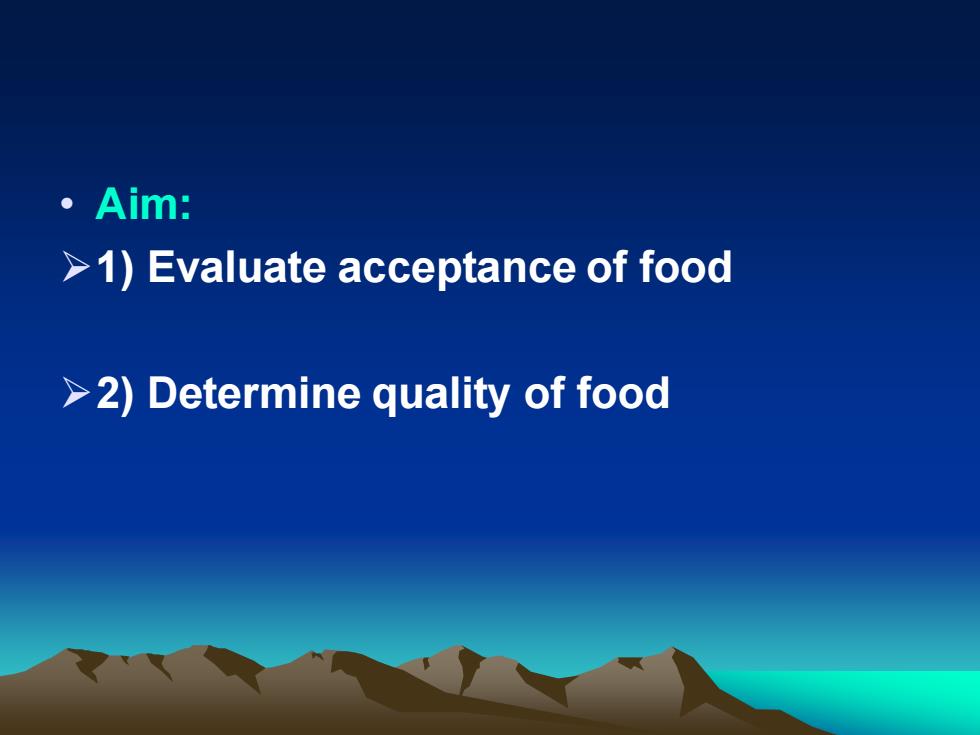
Chapter 3. Sensory test
Chapter 3. Sensory test

1. Introduction • The overall quality of food can be divided into three main categories: quantitative, hidden and sensory. • Some quantitative aspects of food quality are primarily of interest to the process, e.g., yield of product obtained from a raw material. • Hidden quality attributes include the nutritional value of a food or the presence of toxic compounds that, generally, cannot be determined by sensory evaluation
1. Introduction • The overall quality of food can be divided into three main categories: quantitative, hidden and sensory. • Some quantitative aspects of food quality are primarily of interest to the process, e.g., yield of product obtained from a raw material. • Hidden quality attributes include the nutritional value of a food or the presence of toxic compounds that, generally, cannot be determined by sensory evaluation

• Definition: The color, aroma, flavor and shape of a food are tested by person’s sensation: taste, olfaction, visual sensation and touch, and then evaluated with word, symbol or data
• Definition: The color, aroma, flavor and shape of a food are tested by person’s sensation: taste, olfaction, visual sensation and touch, and then evaluated with word, symbol or data

• The selection, acceptance, and digestibility of a food are largely determined by its sensory properties. • According to Kramer sensory include (1) appearance (color, size, shape, absence of defects, and the consistency of liquid and semisolid products); (2) kinesthetics (texture, consistency, and viscosity), and (3) flavor (taste and odor)
• The selection, acceptance, and digestibility of a food are largely determined by its sensory properties. • According to Kramer sensory include (1) appearance (color, size, shape, absence of defects, and the consistency of liquid and semisolid products); (2) kinesthetics (texture, consistency, and viscosity), and (3) flavor (taste and odor)

• Aim: ➢1) Evaluate acceptance of food ➢2) Determine quality of food
• Aim: ➢1) Evaluate acceptance of food ➢2) Determine quality of food